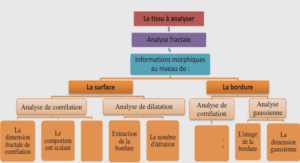Introduction
Shortly after Columbus returned to Europe bringing tobacco from the New World with him, tobacco use was subject to much controversy. Indeed, a number of countries soon adopted laws prohibiting the sale of tobacco and/or its public use, while others described tobacco as a ‘social menace’—among the more severe penalties for selling and/or consuming tobacco products were whippings, beheadings, and nose slittings in Russia, China, Turkey, India, and elsewhere (Wagner 1971; Dillow 1981). However, it was not long before these laws were repealed as treasuries realized that significant rev-enues could be generated from the sale and taxation of tobacco and tobacco products.
For centuries, nearly every country in the world has taxed tobacco and/or tobacco prod-ucts, largely because the relatively inelastic demands for these products make them an easy source of revenues. Over time, however, as the health consequences of cigarette smoking and other tobacco use were discovered, increased taxation of these products has been used, by at least some governments, as a way of reducing the health damage caused by tobacco.
The impact of tobacco taxes on the prices of tobacco products
Increases in taxes on cigarettes and other tobacco products are expected to result in higher prices for these products. This is clearly reflected by the data in Table 10.1,which describes cigarette taxes, prices, and taxes as a percentage of price in selected countries. As expected, prices generally rise with taxes. In general, taxes in low- and middle-income countries are well below taxes in high-income countries; consequently cigarette prices in low- and middle-income countries are well below prices in high-income countries. Moreover, the cigarette tax usually accounts for two-thirds or more of price in higher-income countries (with the notable exception of the United States), compared to half or less of the price in many low- and middle-income countries.
Tobacco taxes, prices, and the demands for tobacco products
10.3.1 Theoretical foundations
Perhaps the most fundamental law of economics is that of the downward-sloping demand curve derived from the consumer’s constrained utility-maximization process. This law states that as the price of a product rises, the quantity demanded of that product falls. For many years, however, numerous researchers viewed cigarette smoking and other addictive behaviors as exceptions to this most basic law of economics because of the seeming irrationality of these behaviors (i.e. Schelling 1978,1984; Elster 1979; Winston 1980). A now substantial and rapidly expanding literature, however, clearly indicates that the demands for tobacco products do respond to changes in prices and other factors. This is apparent from the simple descriptive data presented in Figs 10.1–10.3, as well as from the econometric research that has applied both traditional models of demand and the more recent studies that explicitly account for the addictive nature of cigarette smoking and other tobacco use (see Chapter 5 for a detailed discussion of the economics of addiction).
10.3.2 Estimation issues
Over the past several decades, numerous studies have examined the effects of taxes and prices on the demands for cigarettes and other tobacco products. Most of the earliest involved applications of a traditional model of demand, but many of the more recent studies have modeled the addictive nature of tobacco use. These studies have employed diverse econometric and other statistical methods on data from numerous countries. Many have used aggregate time-series data on cigarette sales for a single geographical unit, while others have employed pooled cross-sectional time-series data. Still others have used data on individuals taken from surveys. One clear conclusion emerges from this literature: increases in the prices of cigarettes and other tobacco products significantly reduce cigarette smoking and other tobacco use. Most estimates for the price-elasticity of demand from the large literature on high-income countries fall into the relatively narrow range from – 0.25 to – 0.50, with many clustering around – 0.40. In contrast, estimates from the much smaller literature on low-income and middle-income countries suggest that demand in these countries is more responsive to price than demand in high-income countries.
Course the taxation of tobacco products (308 KO) (Cours PDF)






